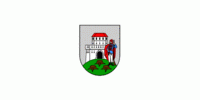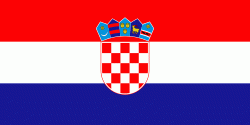Bjelovar
 |
 |
The oldest Neolithic location in this area is in Ždralovi, a suburb of Bjelovar, where, while building a basement for the house of Josip Horvatić, a dugout was found and identified as belonging to the Starčevo culture (5000 – 4300 BC). Finds from Ždralovi belong to a regional subtype of a late variant of the Neolithic culture. It is designated the Ždralovi facies of the Starčevo culture, or the final-stage Starčevo. There are also relics of the Korenovo culture, Sopot culture, Lasinja culture, and the Vučedol culture. as well as the Bronze and Iron Age cultures, found in the wider Bjelovar area. The more intensive development of the area began with the arrival of the Romans, who first came to the area between the Sava and Drava rivers in 229 BC. The intersection of two Roman roads was located exactly at the place where the present-day Bjelovar developed, and in its immediate vicinity was a military camp or station.
With the stabilization of the northern border of the Roman Empire, a collection of settlements probably developed here in the period from II. to IV. century, unrecorded on Roman itineraries, but attested by archaeological remains on today's Matošev Square, Stjepan Radić Square and findings in the wider city area, such as the most prominent findings in the forest and area of Lug.
Bjelovar in its modern form however is one of the youngest cities in Croatia. Bjelovar was first mentioned in 1413. With the penetration of the Turks in the 16th century, only those fortified settlements under the special authority of the Viennese court, where the local population took shelter and survived. Only with the establishment of an administrative and military system of defense against the Turks, better known as the Croatian Military Frontier within which the Bjelovar area was located, Bjelovar (then "Bellowar") was repeatedly mentioned on military maps since the first half of the 17th century. It is mentioned as a military guardhouse, which indicates that it was already included in the Frontier defense system then. Stabilization of the Habsburg-Ottoman border on the Sava river and the new circumstances in the society of the region in the first half of the 18th century conditioned the territorial and administrative reorganization of the Varaždin Generalate.
The Severin Uprising (also known as the Varaždin rebellion), which took place in 1755 in the immediate vicinity of the future city, pointed to the need for a new center from which better control of the Krajišan could be carried out. Viennese military strategists decided to establish a new settlement that would take over the function of headquarters of regimental administrations. A location was chosen in the center of the generalate, on the dividing line between the Križevačka and Đurđevačka regiments.
The foundation and beginning of the construction of Bjelovar dates back to 1756, when the land was purchased and a permit was issued for the purchase of building materials, and the construction was led by Baron Philipp Lewin von Beck. From the very beginning, the city was conceived as the center of the regiments of the Varaždin Generalate, and in accordance with the military function, the construction of military facilities and the settlement of the military population first began. As well as the resettlement of many Czech and Croatian peasants as workforce on the new fort. The exception is the block on the square where the parish church of St. Teresa of Avila (now the Cathedral of St. Teresa of Avila) and the Piarist monastery and school. Two Piarist monks, brothers Hubert and Ignac Diviš, came to Bjelovar in 1761 and opened the first public school on the Đurđevac side of town. By the decision of Maria Theresa on the construction of a new church, which was completed in 1772, the parish of Bjelovar was established, which until 1790 managed by Piarists. In 1771, Empress Maria Theresa confirmed Bjelovar's status as a privileged Krajina city, i.e. a military community, which resulted in demographic and significant economic growth. This trend continued at the beginning of the 19th century when the city began to expand beyond its original borders. And with time it became the administrative centre of the Bjelovar-Križevci county.
The then town of Bjelovar was pronounced a free royal town by ban Ivan Mažuranić in 1874. after the Ottoman wars ended. Peaceful life and economic boom was interrupted by the beginning of the First World War. As an important military town, Bjelovar made its contribution by recruiting the male population, converting many public buildings into hospitals, using the railway to transport soldiers and the wounded. Consequently with the war dragging on, the shortage of manpower and natural resources led to a difficult economic situation and a general shortage of food. With the end of the war Bjelovar became part of the Kingdom of Serbs, Croats and Slovenes and it retained its status as the administrative centre of the Bjelovar-Križevci county. The Vidovdan Constitution of 1921, and on the basis of the Law on Regional and County Self-Government (1922), the Kingdom of SHS was divided into 33 oblasts, and Bjelovar thereby lost the status of county center and became part of the Osijek oblast with the status of a district and a city.
Thanks to the economic foundations created in the previous period, based on trade, crafts and industry, the positive economic trend continued until The Great Depression, when the growth of registered merchants, craftsmen and industrialists was still recorded, but with much lower incomes. In the interwar period, the city received some new facilities. The football field of the Bjelovar Academic Sports Club was arranged in the modern-day city quarter of Logorište. Public city pools also were established.
The short-lived period of the Independent State of Croatia during the Second World War stopped the development of the city in all areas. Two days before the official proclamation in Zagreb, on April 8, 1941, from the balcony of the then city hall (now the building of the Bjelovar City Museum), the mayor Dr. Julije Makanec proclaimed the Independent State of Croatia during the event known as the Bjelovar Uprising. Within two months, a new territorial-administrative division of the state into 22 parishes followed. Thus, after 17 years, the town of Bjelovar again became the regional center, now of the newly founded Greater Bilogora parish. During the war, unlike the villages in the immediate vicinity of Bjelovar, the town did not experience severe material destruction. On several occasions, only the railway was bombed as well as the military bases in the quarter of Vojnović.
With the end of the war and the arrival of the new socialist government, tendencies towards the modernization of the state and the restoration of the failing industry and communal infrastructure were evident from the very beginning. Housing construction was intensified mainly in the northern part of the city such as the quarters of Sjever, Zvijerci, Logorište, Ivanovčani and Pemsko Polje as well as to the south in the quarter of Jug. in 1960 a new post office building was built on the site of the old post office building. In 1955, the Koestlin plant moved from the city core to the industrial zone south of the railway towards Kloštar. In addition to Koestlin and the already existing factories of Toma Vinković, Česma, Tehnogradnja and Elektrometal, new plants were built in this area from the 1960s, while the United Paromlin (later renamed 5 .Maj), stayed in its historical location by the old mill, where it was reorganized and constructed the 50 metre tall Bjelovar silos complex.
Map - Bjelovar
Map
Country - Croatia
Currency / Language
| ISO | Currency | Symbol | Significant figures |
|---|---|---|---|
| HRK | Croatian kuna | kn | 2 |
| ISO | Language |
|---|---|
| HR | Croatian language |
| SR | Serbian language |

















